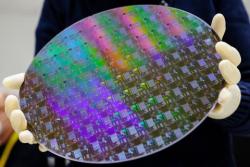Esame ant naujos fotonikos eros slenksčio, o Europos Komisija siekia užtikrinti, kad piliečiai ir įmonės galėtų naudotis visais šios technologijos privalumais.
Fotonika yra šviesos mokslas ir technologija. Ji apima šviesos generavimą, nukreipimą, manipuliavimą ja, jos stiprinimą ir aptikimą. Ir tai yra už daugelio naujovių, kurios pakeitė tai, kaip mes gyvename per pastaruosius kelerius metus.
Lazeriai, optinės skaidulos, fotoaparatai ir ekranai mūsų telefonuose, optiniai pincetai ir apšvietimas mūsų automobiliuose, namuose, kompiuterių ekranuose ir televizoriuose yra tik keli fotonikos pavyzdžiai. Atsižvelgiant į dabartinę padėtį ir fotonikos potencialą skatinti inovacijas keliose pramonės šakose, ji buvo pripažinta viena iš 21-ojo amžiaus Europos bazinių didelio poveikio technologijų (DPT).
Europos technologijų platforma „Fotonika“21 atstovauja Europos lygmens fotonikos mokslinių tyrimų prioritetams. Ja siekiama sukurti bendrą Europos pramonės, mokslo ir politikos požiūrį. Europos Komisija pasirašė viešojo ir privačiojo sektorių partnerystės sutartį su "Photonics"21, kad paremtų ir plėtotų šią esminę Europos mokslo ir verslo dalį.
Fotonika ir kasdienis gyvenimas
Fotonika atlieka svarbų vaidmenį skatinant inovacijas vis daugiau sričių. Fotonika taikoma keliuose sektoriuose – nuo optinių duomenų perdavimo iki vaizdo gavimo, apšvietimo ir ekranų, gamybos sektoriaus, gyvosios gamtos mokslų, sveikatos priežiūros, saugumo ir saugos.
Fotonika siūlo naujus ir unikalius sprendimus, kai šiuolaikinės tradicinės technologijos artėja prie savo greičio, pajėgumo ir tikslumo ribų. Fotonikos poveikis mūsų kasdieniame gyvenime yra puikus.
Sveikata
Fotonika gali iš esmės pakeisti sveikatos priežiūrą, nes šviesa gali greitai, jautriai ir tiksliai nustatyti ir išmatuoti ligas.
Biofotonika yra šviesos technologijų naudojimas bio & medicinos mokslai. Jis gali būti veiksmingai naudojamas labai ankstyvam ligų nustatymui, naudojant neinvazinius vaizdo gavimo metodus arba taikomąsias programas priežiūros vietoje.
Biofotonika taip pat padeda analizuoti procesus molekuliniu lygmeniu, geriau suprasti ligų kilmę, taip sudarant sąlygas prevencijai ir naujiems gydymo būdams. Fotoninės technologijos taip pat atlieka svarbų vaidmenį tenkinant mūsų senėjančios visuomenės poreikius – nuo širdies stimuliatorių iki sintetinių kaulų, endoskopų ir mikrokamerų, naudojamų in vivo procesuose.
Apšvietimas ir energijos taupymas
Fotonika taip pat naudojama pažangiose apšvietimo technologijose, pvz., Kietojo kūno apšvietime (SSL), skirtame bendrojo apšvietimo reikmėms. SSL pagrįstas šviesos diodų (LED) ir organinių šviesos diodų (OLED) technologijomis.
SSL užtikrina aukštesnės kokybės apšvietimą ir padeda sutaupyti daug energijos. Intensyvia gamybos ir mokslinių tyrimų veikla siekiama toliau gerinti SSL veikimą, visų pirma energijos vartojimo efektyvumą ir kokybę, ir taip mažinti sąnaudas.
Įgyvendindama Europos žaliąjį kursą, ES įsipareigojo iki 2050 m. užtikrinti nulinį grynąjį išmetamą šiltnamio efektą sukeliančių dujų kiekį. Apšvietimas sudaro apie 19% elektros energijos suvartojimo visame pasaulyje, todėl efektyvesnis apšvietimas sutaupys daug energijos.
Pavyzdžiui, pakeitus kaitinamąsias lemputes SSL technologijomis būtų galima sutaupyti iki 70 proc. šiandien apšvietimui sunaudojamos energijos. Be to, SSL pasižymi išskirtinėmis unikaliomis savybėmis, įskaitant tvirtumą, ilgesnį tarnavimo laiką, pritemdymą ir spalvų derinimą. Šios savybės suteikia precedento neturinčias galimybes formuoti ir koreguoti apšvietimo aplinką, kad atitiktų individualius poreikius.
Plačiajuostis internetas
Greitesnių, skaidresnių, dinamiškesnių ir ekologiškesnių plačiajuosčio ryšio tinklų poreikis skatina ES mokslinių tyrimų politiką optinių duomenų perdavimo srityje. Šios srities moksliniai tyrimai susiję su dramatiškai išaugusiu energijos suvartojimu žiniatinklyje, duomenų centruose ir serveriuose. Tikslas – sudaryti sąlygas eismo augimui, greitiems tinklo pokyčiams ir kintantiems eismo poreikiams, kartu užtikrinant spartesnį, pigesnį ir efektyviau energiją vartojantį duomenų perdavimą.
Sauga ir saugumas
Fotonika yra vienas iš pagrindinių veiksnių, padedančių didinti žmonių, prekių ir aplinkos saugą ir saugumą. Tai suteikia galimybę kurti bekontakčius jutiklius ir vizualines programas, veikiančias įvairiuose šviesos spektro diapazonuose nuo rentgeno iki teraherco. Tokie jutikliai būtų pakankamai jautrūs ir tikslūs, kad būtų galima patikimai nustatyti galimus pavojus ar pavojingas situacijas.
Fotonikos technologijos turi keletą praktinių pritaikymų saugos ir saugumo srityje. Pluošto jutikliai naudojami konstrukciniams defektams statybų sektoriuje aptikti, aplinkos taršai išvengti ir pagalbinėms vairavimo sistemoms kurti.
Saugumo prietaikos taip pat grindžiamos fotonikos technologijomis, pavyzdžiui, biometrinėmis ir sienų apsaugos sistemomis, vaizdo stebėjimo sistemomis ir įranga, skirta pavojingoms ar neteisėtoms prekėms aptikti.
Aukštos kokybės gamyba
Lazeriai tapo universaliu įrankiu. Lazerinis apdorojimas tapo būtinas didelės apimties, pigiai ir tiksliai gamybai. Naujos lazeriu paremtos technologijos skatina naujus gamybos procesus su išskirtine kokybe. Tai leidžia masiškai pritaikyti gamybą pagal poreikius ir labai lanksčią gamybą pagal poreikį, greitą, švarią ir efektyviai išteklius naudojančią gamybą ir gamybą be trikčių.
Europa pirmauja pramoninių lazerių technologijų srityje. Ji kuria, tiekia ir taiko lazerius ir lazerines sistemas. Pramoninės lazerių technologijos naudojamos automobilių pramonėje, plastikams apdoroti, fotovoltiniams elementams, puslaidininkiams ir miniatiūriniams komponentams, naudojamiems medicinos technologijose, gaminti ir kt.
Norėdami sužinoti daugiau apie fotoniką, apsilankykite Europos technologijų platformoje „Photonics“21 arba susisiekite su mumis dėl išsamesnės informacijos.




